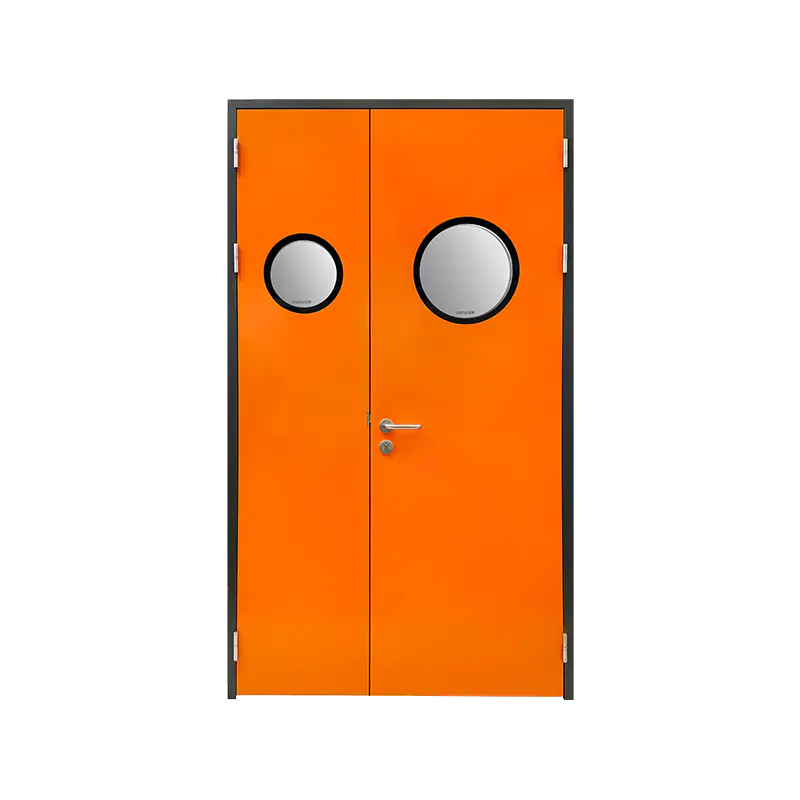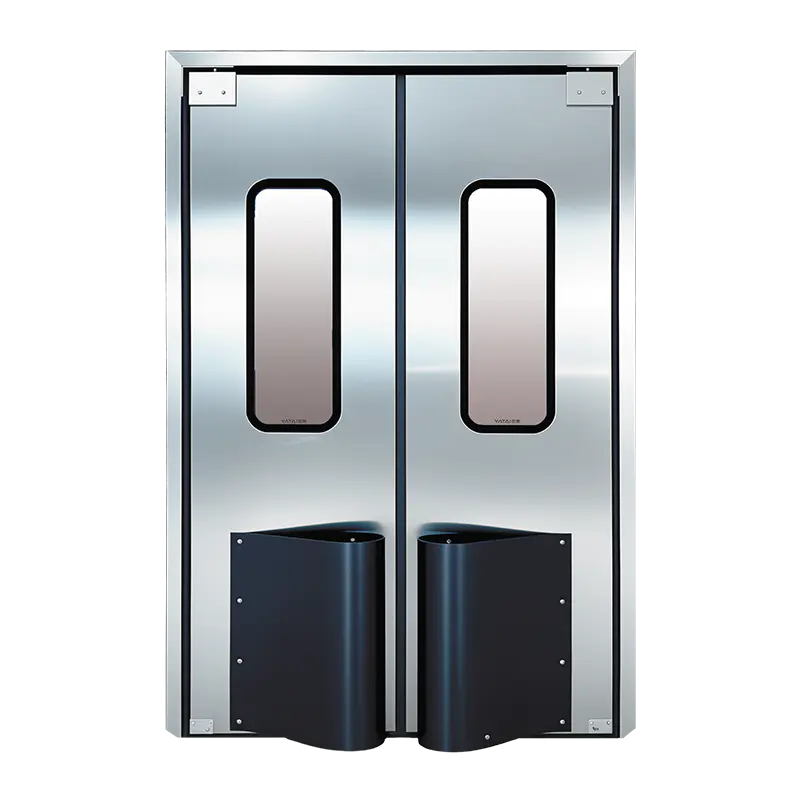How Medical Doors Ensure Safety in Healthcare Facilities
Healthcare facilities are complex environments that require strict attention to safety, hygiene, and efficiency. Among the many components that contribute to a safe and functional hospital or clinic, medical door plays a critical role. These doors are more than simple entryways; they are essential elements in infection control, patient privacy, emergency management, and operational efficiency. Understanding how medical doors function and their impact on healthcare safety is vital for administrators, architects, and medical staff alike.
1. Infection Control
One of the primary concerns in any healthcare facility is preventing the spread of infections. Hospitals and clinics house patients with varying degrees of vulnerability, including those with compromised immune systems. Medical doors contribute significantly to infection control in several ways:
1.1 Barrier Against Contaminants
Medical doors act as barriers between clean areas and spaces that may harbor pathogens. For example, operating rooms, intensive care units, and isolation wards require doors that minimize the exchange of air and contaminants. Properly sealed doors prevent dust, bacteria, and viruses from entering sterile environments, reducing the risk of hospital-acquired infections.
1.2 Materials and Finishes
The materials used in medical doors are carefully chosen for their antimicrobial properties and ease of cleaning. Stainless steel, coated aluminum, and specialized plastics are common because they resist bacterial growth and can withstand frequent sanitation. Smooth surfaces without crevices ensure that cleaning agents reach every part of the door, further reducing infection risk.
1.3 Automated Doors for Minimal Contact
Automatic medical doors reduce the need for staff and patients to touch surfaces, which is a common vector for disease transmission. Motion sensors or touchless activation systems allow doors to open and close without direct contact, limiting the spread of germs.
2. Fire Safety
Fire safety is a critical aspect of healthcare facility design. In the event of a fire, medical doors must provide protection while enabling safe evacuation.
2.1 Fire-Rated Doors
Medical doors in hospitals are often fire-rated, meaning they can withstand fire for a specified period. These doors prevent flames and smoke from spreading between compartments, giving occupants more time to evacuate and limiting damage to critical equipment.
2.2 Smoke Control
Certain medical doors are designed to control smoke movement. Smoke containment doors are essential in long corridors and patient care areas, preventing smoke from compromising the safety of people in other parts of the facility.
2.3 Compliance with Regulations
Fire safety codes mandate specific standards for door performance, including resistance to heat, smoke leakage, and structural integrity. Compliance ensures that healthcare facilities are prepared for emergencies and that patient safety is prioritized.
3. Patient Privacy and Security
Beyond infection control and fire safety, medical doors are vital for protecting patient privacy and securing sensitive areas.
3.1 Privacy in Patient Rooms
Medical doors provide physical separation for patient rooms, maintaining privacy during consultations, treatment, and rest. Soundproofing in doors reduces noise transmission, ensuring confidential discussions remain private and patients experience less stress.
3.2 Restricted Access Areas
Hospitals contain areas that require restricted access, such as pharmacies, laboratories, and administrative offices. Medical doors equipped with controlled entry systems, such as key cards or biometric scanners, prevent unauthorized access while maintaining smooth workflow for staff.
3.3 Emergency Access
While doors provide security, they must also allow quick access in emergencies. Medical doors are designed to balance security and rapid entry, enabling medical personnel to respond promptly to critical situations without obstruction.
4. Operational Efficiency
Medical doors contribute to the efficiency of hospital operations by facilitating movement, reducing bottlenecks, and supporting workflow management.
4.1 Automatic Sliding Doors
In high-traffic areas such as emergency rooms and operating room corridors, automatic sliding doors prevent congestion and allow staff to move quickly, often while transporting patients on beds or using equipment.
4.2 Space Optimization
Certain medical doors, such as sliding or folding designs, optimize space usage in tight areas. This is especially important in small clinics or specialized treatment rooms where every square foot must be utilized efficiently.
4.3 Durability and Low Maintenance
Medical doors are designed for high-frequency use and minimal maintenance. Durable materials and mechanical systems ensure that doors remain functional over years of continuous operation, reducing downtime and repair costs.

5. Noise Reduction and Comfort
Noise in hospitals can negatively impact patient recovery, staff performance, and overall comfort. Medical doors with soundproofing capabilities contribute to a quieter, more restful environment.
5.1 Sound-Reducing Materials
Medical doors often include materials and seals that reduce noise transmission. This is particularly important for rooms where patients require rest or where confidential conversations occur.
5.2 Separation of Noisy Areas
Doors can separate areas with high noise levels, such as emergency departments or diagnostic labs, from patient wards. Proper door placement helps maintain a calm and healing environment throughout the facility.
6. Customization for Specialized Needs
Medical facilities have diverse requirements, and medical doors can be customized to meet specific needs.
6.1 Laboratory Doors
Laboratories often require doors that resist chemical corrosion, provide airtight sealing, and support controlled airflow. Specialized lab doors ensure both safety and compliance with regulatory standards.
6.2 Pediatric and Geriatric Units
Doors in pediatric and geriatric units may include additional safety features, such as rounded edges, impact resistance, and ease of operation for staff and patients with limited mobility.
6.3 Isolation Rooms
Isolation rooms require doors that maintain negative or positive air pressure. This prevents cross-contamination and ensures that infectious patients do not compromise other areas of the facility.
7. Technology Integration
Modern medical doors integrate with hospital technology systems to enhance safety and efficiency.
7.1 Access Control Systems
Electronic access control systems track who enters and exits critical areas, enhancing security and accountability.
7.2 Alarm and Monitoring Systems
Some doors are equipped with alarms that notify staff if doors are left open, breached, or malfunctioning. This ensures continuous safety monitoring in sensitive zones.
7.3 Integration with Building Management
Advanced doors can be connected to building management systems, allowing centralized control over opening schedules, locking mechanisms, and emergency protocols.
8. Maintenance and Longevity
Proper maintenance is essential to ensure medical doors continue to provide safety benefits over time.
8.1 Regular Inspections
Routine inspections of hinges, sensors, seals, and locking mechanisms prevent failures that could compromise safety.
8.2 Cleaning Protocols
Medical doors must be cleaned regularly with appropriate disinfectants. Materials that resist corrosion and microbial growth facilitate effective cleaning without damage.
8.3 Professional Servicing
Engaging trained technicians for maintenance ensures doors operate correctly and meet safety standards. This minimizes the risk of unexpected breakdowns that could disrupt healthcare operations.
Conclusion
Medical doors are indispensable components of healthcare facilities. They contribute to infection control, fire safety, patient privacy, operational efficiency, noise reduction, and compliance with regulatory standards. From automated sliding doors in emergency rooms to specialized isolation room doors, each type of medical door plays a unique role in maintaining a safe and effective healthcare environment.
By understanding the multiple functions and benefits of medical doors, healthcare administrators and facility managers can make informed decisions about design, installation, and maintenance. Ultimately, these doors are not just physical barriers; they are critical enablers of safety, comfort, and efficiency in hospitals and clinics, ensuring that patients receive care in a secure and protected environment.


 English
English Español
Español русский
русский عربى
عربى
















